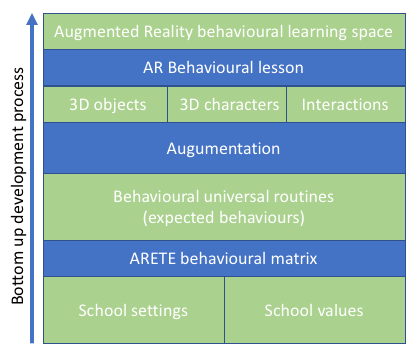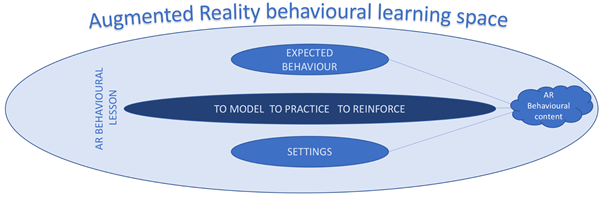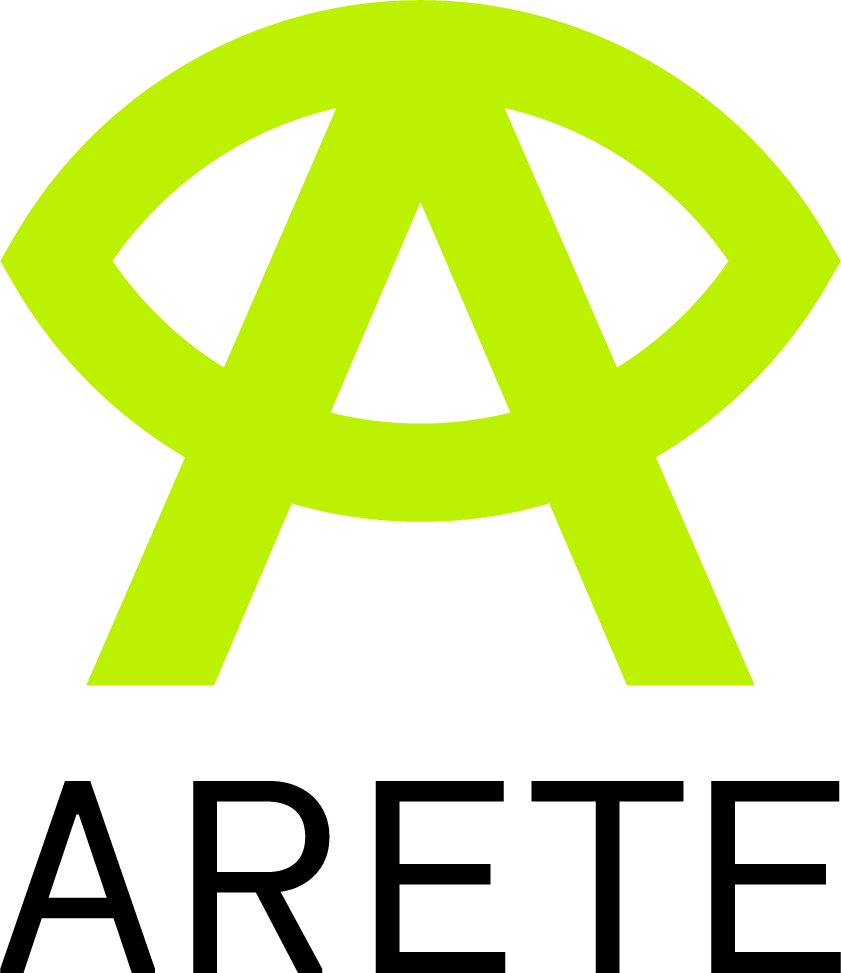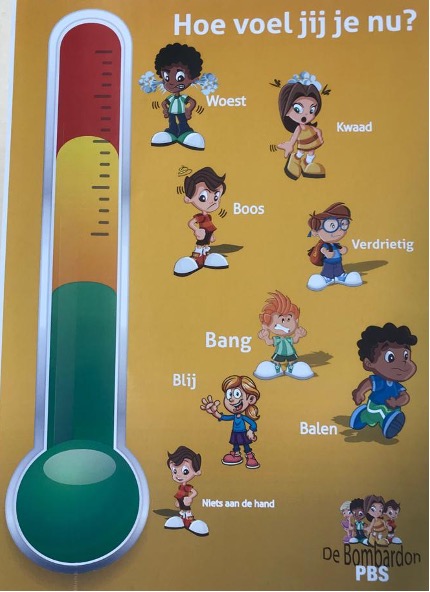Augmented Reality for PBIS: define a domain of application
In the last decade, research in education and practitioners' interest have been focusing on emerging technologies, such as Augmented Reality (hereafter: AR), and their potential in teaching and learning processes have been widely explored. In this regard, research has clearly shown that AR solutions can enhance students’ academic outcomes compared to traditional learning methods (Ozdemir et al., 2018). Research also indicated that AR solutions can have a stronger effect on learners’ achievement in terms of content understanding and long-term retention, motivation, engagement, and satisfaction with the learning experience than traditional and other digital media-related educational experiences exert (Garzon et al., 2019; Radu, 2014).
Despite the amount of literature on the role of AR technology in the educational field, no existing research has yet investigated the potential impact of AR solutions on the promotion of students’ behavioural outcomes at a school-wide level from a prevention perspective. In this regard, the AR solution developed in Pilot 3 tries to overcome this gap by specifically designing an application within the framework of School-wide Positive Behaviour Interventions and Support (hereafter: SWPBIS), a well-validated school-wide approach aiming at supporting students’ positive behaviour and promoting school outcomes. More specifically, the SWPBIS framework aims at preventing behavioral problems, such as disruptive classroom behavior, to support the development of a safe school climate and thus promoting students’ social-emotional development and learning outcomes (Horner et al., 2009; Sugai et al., 2000). Interventions delivered in SWPBIS schools follow a three-tiered system of behavior support. The first tier includes a set of universal interventions designed for all school members and across all school settings (e.g., classroom, hallway, corridor, et cetera) to create and guide a positive social culture. To reach this aim, a restricted number of contextually and culturally relevant behavioural expectations, generally three to five, are selected and taught to all school stakeholders (students, school staff, and community members) across all settings. They are defined, modelled, and practiced as other academic skills. SWPBIS practice also requires corrective and positive feedback being delivered during the educational intervention. More in detail, SWPBIS interventions comprises both 1) acknowledgement or rewards of students’ adherence to behavioral expectations and 2) systematic responses to problem behaviours (Lynass, Tsai, Richman, & Cheney, 2012).
According to the aim of the ARETE project, an PBIS-AR application is being designed and developed to support educational interventions delivered within only the first tier. School staff, teachers, and students will use the app for teaching, practicing, and learning of expected behaviour following the guide provided by the PBIS framework (Sugai et al. 2000). Specifically, the application can support the following main processes underpinning PBIS practice:
- definition, modeling, and practicing of expected behaviour;
- acknowledgement and reinforcement of students’ compliance with expected behaviours.
First, for the PBIS-AR application to be effectively and universally used across schools of different countries, it should support a teaching and learning process based on universal:
- behavioural expectation matrix, and
- positive reinforcement systems of students’ compliance to expected behaviour.
Steps of the bottom-up process for the design of the PBIS-AR software solution and its pedagogical integration in the PBIS practice are summarised in Figure 2 (Chiazzese et al. 2021): Development of the PBIS-AR application and its integration in the PBIS practice.

The process started with the first step, summarised at the bottom of the figure. It consisted of the development of the ARETE behavioural expectations matrix which comprises a set of universal behavioural routines based on different school values to be learned and practiced across all school settings.
For the purposes of the project, a final shortlist of 12 behavioural expectations was derived. This shortlist represents the basis for the development of learning material to be augmented; in fact, the behavioural routines, as descriptions of actions performed in examples and non-examples of behavioural expectations, includes all those elements (e.g. characters, furniture, and other environmental characteristics) needed to create augmented 3D objects in terms of 1) characters, 2) objects and 3) associated atomic animations.
Augmented reality objects will be used in the last development stage, represented at the top of figure 2. In this stage, a small team of Dutch primary school teachers in collaboration with Dutch PBIS-experts have developed behavioural lessons to teach behavioural routines through the integration of AR technology into traditional PBIS practice. More in detail, the AR solution will support the creation of an augmented learning space aimed at teaching and practicing social behavior skills via teaching expected behavior. Figure 3 explains more in depth the Augmented Reality Behavioural Learning Space (AR-BLS) and shows how a behavioural lesson is articulated and supported with the introduction of Augmented Reality.

An AR-BLS can be defined as a real learning space enriched with AR behavioural learning resources (AR-BLR) that the teacher can create and use along the different phases of teaching, practice and reinforce according to the structure of a typical behavioural lesson. In the teach phase the teacher demonstrates or models the expected behavior. The teacher clarifies the difference between expected and unexpected behavior by providing positive examples and a negative example (or non- example). Augmented Reality can be embedded in this process for supporting teachers in the creation of AR examples and non-example behaviours that can explain to the student how to perform the different steps. In the practice and reinforce phase students are involved in multi-user interactive activities aimed at giving them the opportunity to practice and reflect on new learned skills in a variety of settings (arrival/dismissal, corridors, breaks/lunch, playground, restroom, and classroom) where the behaviors should be used (Chiazzese et al 2021).
References
Chiazzese, G., Goei, S.L., Pronk J., Tosto C, Seta L., Arrigo M., Taibi D., Farella M., & Mangina E. (2021). Teaching behavioural routines using Augmented Reality in the ARETE project. International Science Fiction Prototyping conference (SCIFI-IT 2021), 60-64.
Garzón, J., Pavón, J., & Baldiris, S. (2019). Systematic review and meta-analysis of augmented reality in educational settings. Virtual Reality, 23(4), 447-459.
Horner, R.H.; G. Sugai, G; K. Smolkowski; L. Eber; J. Nakasato; A.W. Todd; and J. Esperanza. 2009. “A Randomized, Wait-List Controlled Effectiveness Trial Assessing School-Wide Positive Behavior Support in Elementary Schools.”Journal of Positive Behavior Interventions 11, No.3 (Jul), 133–144
Lynass, L., Tsai, S-F, Richman, TD, Cheney, D. (2012). Social Expectations and Behavioral Indicators in School-Wide Positive Behavior Supports: A National Study of Behavior Matrices. Journal of Positive Behavior Interventions. 14(3):153-161. doi: 10.1177/1098300711412076
Ozdemir, M., Sahin, C., Arcagok, S., & Demir, M. K. (2018). The effect of augmented reality applications in the learning process: A meta-analysis study. Eurasian Journal of Educational Research, 18(74), 165-186.
Radu, I. (2014). Augmented reality in education: a meta-review and cross-media analysis. Personal and Ubiquitous Computing, 18(6), 1533-1543.
Sugai, G.; J.R. Sprague; R.H. Horner; and H.M. Walker. 2000. “Preventing School Violence: The Use of Office Discipline Referrals to Assess and Monitor School-Wide Discipline Interventions.” Journal of Emotional and Behavioral Disorders 8, No.2 (Apr), 94-101.
Giuseppe Chiazzese
Antonella Chifari
Doriana Dhrami
Paola Denaro
Tosto Crispino
Istituto per le Tecnologie Didattiche, Consiglio Nazionale delle Ricerche, Palermo, Italy



